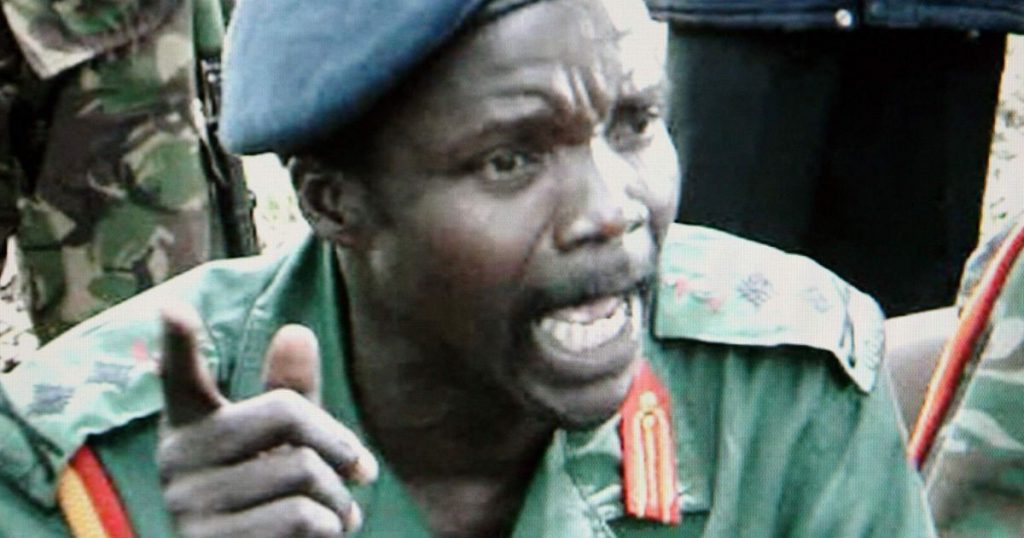African warlord Joseph Kony was brought into the public spotlight with the arrival of the KONY 2012 film and accompanying campaign aimed at spurring public interest to arrest him for war crimes, especially the use of child soldiers. The short film was produced by the nonprofit group Invisible Children and was an immediate viral hit, amassing nearly 100 million views (which is only about a billion and a half shy of “Gangnam Style”). The specific purpose of the video was to encourage young people to donate, “spread awareness,” and urge government officials across the globe to put their crosshairs on Kony and his Lord’s Resistance Army (LRA).
So to reiterate, their goals were:
1) raise money
2) spread awareness
3) rescue child soldiers.
4) capture Kony
Well, they accomplished the first one by raising $20 million. I guess you could say they spread awareness, too. But they fell short on 3 and didn’t accomplish 4. Most importantly, they helped lots of people feel good by allowing them a chance to participate in “slacktivism.” So they get a generous 2 out of 4.
When the video was released on March 5, 2012, millions of people, including several celebrities, immediately leapt to support KONY 2012. It took the guilt-tripping “Sarah McLaughlin, Abused Animal ASPCA Commercial” route of tugging at people’s heartstrings and offering them a chance to “make a difference.” Millions of easily pleased Facebookers were content with supporting the cause by reposting the video, saying things like “This is very important, please watch,” or on the more hardcore end, buying KONY 2012 merchandise. After that, very few said, “Now what?” or even seemed to give it a second thought. But this lack of attention (and therefore scrutiny) may have been a good thing for Invisible Children.
They came under immediate criticism for making the video, with well-founded accusations of oversimplifying the situation and exaggerating the scope of Kony’s power (his LRA only numbered in the hundreds), therefore ignoring the much larger issue of child soldiers and the horror of constant war in Africa. Many claimed that military action against the LRA would end in the deaths of many young and innocent victims.The video also made it seem as if the Ugandan Army should be responsible for neutralizing Kony, when in reality, Kony had already been forced from Uganda and into the Central Africa Republic and the Democratic Republic of Congo. But this criticism was in the immediate wake of the video release and at the height of KONY 2012 fervor, and it didn’t spread with the same intensity as the campaign itself. So slacktivists continued to parrot Invisible Children, despite their unclear plan of action and misinformation; well, at least for another week or so.
Then Invisible Children co-founder and director of the KONY 2012 film Jason Russell had what he called a “meltdown,” but what I and the rest of the world called “a guy standing naked at an intersection yelling at cars and playing with his dick.” This heaped on top of the criticism for the dumbed-down, and in some cases just plain wrong, information in the video made public opinion tilt against the organization. There was a general consensus in the online community (which is the community that supported it in the first place) that KONY 2012 was a joke. At least reposts of the video stopped pretty abruptly after this incident.
Invisible Children didn’t disappear, but they never saw the same kind of success as they did with the KONY 2012 video (at least when it came to publicity). They continued the campaign with a march on Washington, which was heavy on cries of “Hooray for us!” and were later placated with the signing of a new bill expanding the Rewards for Justice Program to include the allocation of money for information on foreign terrorists (as opposed to domestic terrorists, as it had been previously), namely Kony. Also, the United States, the African Union, and the European Union agreed to send a small force, mostly to supervise and organize soldiers in Central Africa with the goal of neutralizing Kony.
So the campaign, whatever the negatives, did actually create some buzz and some resulting legislative and military action. Whether it was token action or not remains to be seen. The largest problem those few who actually continued to pay attention have with this group is how they have handled all the millions of dollars they collected from people.
The group released a video on March 6th of this year, marking the one-year anniversary of KONY 2012, detailing what has come of the campaign and what they have done with all that money. “What Happened with KONY 2012?” discussed the bill signing and building radio stations in Africa used to alert people of rebel armies coming their way. They showed how they built a refuge for former child soldiers and the victims of war in Africa. Also, they quickly mentioned that two LRA leaders were out of the picture (foregoing any details). But one might notice that the comments have been disabled on this video, and for good reason.
Invisible Children released their financial report at the end of last year with dumbed-down, handwritten notes like “This means we got the all-clear,” explaining the accounting lingo in terms teenagers can understand so they wouldn’t have to figure it out themselves. Some were upset that only around 37% of expenditures went to direct action in Central Africa. The rest was spent on “awareness” and expenses. This really isn’t unusual for a charity, though I don’t feel as if this makes it any better. Since they appealed so directly to young people, who blindly gave because they thought they would be directly helping to stop Kony, it seems mildly wrong that most of that money has gone towards “awareness.” But this really is just standard operating procedure for many charities, so welcome to the world of nonprofits, kids.
Some people were also upset that at least three top executives in the charity (including Mr. Naked on a Street Corner) made salaries in the high 80K range (around 1% of expenses each). Once again, this amount is not so outrageous, but the fact that 3% of total expenses went to three people seems a bit irresponsible. For some context, the CEO of the National Foundation for Cancer Research makes $289,760 per year (nearly 2% of expenses, which is looked upon as poor allocation of funds) and the CEO of Feeding America makes $408,958, but this is only about .02% of expenses (which is not looked at as poor allocation). Another slightly misleading aspect of Invisible Children exposed in their financials is that they count hundreds of thousands of dollars of KONY 2012 merchandise as an asset, meaning that they plan on selling it still, despite the fact that it is 2013. I think it is time to write this stuff off.
The KONY 2012 campaign just goes to show that before donating, you should always check how a charity allocates their funds on sites like charitynavigator.org, which incidentally gave Invisible Children a pretty good rating. So is Invisible Children a scam? Not in the slightest. But did they mislead millions of mostly young people with a trendy video? Most definitely. I think this says more about the state of the charitable fundraising industry (and it is most definitely an industry as opposed to a bunch of kindhearted individuals) and the lazy nature of easily pleased people than it does about Invisible Children. Nothing that is of any importance will ever be solved by an easy solution, and this was touted as just that. It seems that they were a small charity and had a wildly successful campaign, even bringing in many donors that had never donated to anything before and were unfamiliar with the way charities operate, and didn’t handle it all that well because it was unexpected.
This is an example of why it is never a good idea to base your beliefs and actions (and definitely where you spend your money) on trends. If you are going to stop supporting a cause because one of the leaders loses favor in the public eye, then it is probably not worth supporting in the first place. So before you donate, do some research and ask yourself, “Would I still give money to this organization after a crazy, naked incident?”






